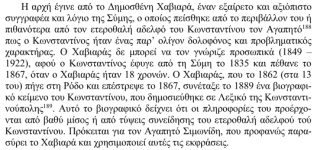Steven Avery
Well-known member
What threads? Post a list.
Sinaiticus Jeremiah - light page from 1844 Leipzig next to the 'yellow with age' 1859 British Library page
https://forums.carm.org/threads/sin...low-with-age-1859-british-library-page.15655/
Uspensky - Sinaiticus has no gray hair, no wrinkles, not as old as Tischendorf claims
https://forums.carm.org/threads/usp...nkles-not-as-old-as-tischendorf-claims.15707/
Sara Mazzarino - "What I can certainly say is that the conservation conditions of CS are absolutely perfect in is current state"
https://forums.carm.org/threads/sar...absolutely-perfect-in-is-current-state.15801/
"the action of ink upon vellum" - an example of science changing for Sinaiticus
https://forums.carm.org/threads/the...ple-of-science-changing-for-sinaiticus.14909/
how did Simonides and Kallinikos know about the colouring of the manuscript?
https://forums.carm.org/threads/how...-about-the-colouring-of-the-manuscript.15790/
Coptic-Arabic miniatures - two-step 1853 and 1859 theft-extraction from St. Catherine's by Tischendorf - similar to Sinaiticus CFA 1844 and 1859
https://forums.carm.org/threads/cop...imilar-to-sinaiticus-cfa-1844-and-1859.14486/
how did Simonides and Kallinikos know about Tischendorf's 1844 manuscript theft of 43 leaves?
https://forums.carm.org/threads/how...rfs-1844-manuscript-theft-of-43-leaves.15795/
Why is the Codex Sinaiticus full New Testament perfectly preserved ?
https://forums.carm.org/threads/why...full-new-testament-perfectly-preserved.13800/

